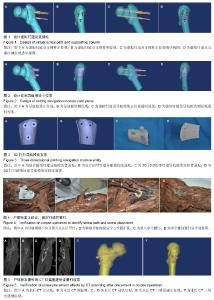| [1] Frihagen F,Nordsletten L,Madsen JE.Hemiarthroplasty or internal fixation for iutracapsular displaced femoral neck fractares:randomised controlled trial.BMJ. 2007; 335(7632):1251-1254.[2] Wang J, Jiang B, Marshall RJ, et al.Arthroplasty or internal fixation for displaced femoral neck fractures: which is the optimal alternative for elderly patients? A meta-analysis.Int Orthop. 2009; 33(5):1179-1187.[3] 张英泽.临床创伤骨科流行病学[M].北京:人民卫生出版社, 2009:155-159.[4] Keating JF, Grant A, Masson M, et al.Displaced intracapsular hip fractures in fit, older people: a randomised comparison of reduction and fixation, bipolar hemiarthroplasty and total hip arthroplasty. Health Technol Assess. 2005; 9(41):iii-iv, ix-x, 1-65.[5] Gao H, Liu Z, Xing D, et al.Which is the best alternative for displaced femoral neck fractures in the elderly?: A meta-analysis.Clin Orthop Relat Res. 2012; 470(6): 1782-1791.[6] Gjertsen JE, Vinje T, Lie SA, et al.Patient satisfaction, pain, and quality of life 4 months after displaced femoral neck fractures: a comparison of 663 fractures treated with internal fixation and 906 with bipolar hemiarthroplasty reported to the Norwegian Hip Fracture Register.Acta Orthop. 2008; 79(5):594-601.[7] Waaler Bjørnelv GM, Frihagen F, et al. Hemiarthroplasty compared to internal fixation with percutaneous cannulated screws as treatment of displaced femoral neck fractures in the elderly: cost-utility analysis performed alongside a randomized, controlled trial.Osteoporos Int. 2012; 23(6):1711-1719.[8] Vasenius J,Pohionen T,Pentti,et al.Inmal stability of femoral neck osteosynthesis with absorbable self-reinforced poly-L-lactide (SR-PLLA) and metaIlic screws:a comparative study on 21 cadavers.J Biomed Maler Res.1998;39(2):171-175.[9] Jukkala-Partio K, Laitinen O, Partio EK,et al. Comparison of the fixation of subcapital femoral neck osteotomies with absorbable self-reinforced poly-L-lactide lag-screws or metallic screws in sheep.J Orthop Res. 1997; 15(1):124-127.[10] Viljanen J, Kinnunen J, Bondestam S, et al. Intramedullary fixation of distal femoral diaphyseal osteotomies with absorbable self-reinforced poly-L-lactide and metallic intramedullary rods assessed by plain radiographs, quantitative computed tomography, and magnetic resonance imaging: an experimental study in rabbits.J Biomed Mater Res. 1998; 39(2):222-228.[11] Mizrahi J, Hulin RS, Taylor JK, et al.Investigationof load transfer and optimum pincofiguration in the internal fixation,by Muller screws, offractured femoral necks. Med Biol Eng Comput. 1980;18(3):319-325.[12] Selvan VT, Oakley MJ, Rangan A, et al.Optimum configuration of cannulated hip screws for the fixation of intracapsular hip fractures: a biomechanical study. Injury. 2004; 35(2):136-141.[13] Estrada LS, Volgas DA, Stannard JP, et al.Fixation failure in femoral neck fractures.Clin Orthop Relat Res. 2002; (399):110-118.[14] Oakey JW,Stover ND,Summers HD,et al.Does screw configuration affect subtrochanteric fracture after femoral neck fixation? Clin Orthop Relat Res. 2006; 443:302-306.[15] Tejwani NC, Park S, Iesaka K, et al.The effect of locked distal screws in retrograde nailing of osteoporotic distal femur fractures: a laboratory study using cadaver femurs.J Orthop Trauma. 2005; 19(6): 380-383.[16] Jansen H, Frey SP, Meffert RH.Percutaneous screw osteosynthesis of femoral neck fractures in the elderly. Subtrochanteric fractures as severe complications.Unfallchirurg. 2011; 114(5):445-451.[17] Weil Y,Pearle A,Liebergall M,et al.Computerized navigation for treatment of slipped femoral capital epiphysis. HSS J. 2006;2(2):172-175.[18] 曾羿,沈彬.数字化骨科技术在关节置换术中的应用[J].中华骨科杂志,2013,33(9):961-964.[19] Bono KT, Rubin MD, Jones KC, et al.A prospective comparison of computer-navigated and fluoroscopic-guided in situ fixation of slipped capital femoral epiphysis.J Pediatr Orthop. 2013; 33(2): 128-134.[20] Westberry DE, Davids JR, Cross A, et al.Simultaneous biplanar fluoroscopy for the surgical treatment of slipped capital femoral epiphysis.J Pediatr Orthop. 2008; 28(1):43-48.[21] 万永鲜,卓乃强,葛建华,等.数字化骨科内固定技术在四肢多段复杂骨折中的应用[J].中国矫形外科杂志, 2013, 21(22):2317-2319.[22] 张元智,陆声,赵建民,等. 数字化技术在骨科的临床应用[J].中华创伤骨科杂志,2011,13(12)1161-1165.[23] Giannatsis J,Dedoussis V.Additive fabrication technologies applied to medicine and health care: a review. Int J Adv Manuf Technol.2009;40:116-127.[24] 李新春,康麟,庞渊. 3D 打印技术在 Pilon 骨折手术治疗中的应用[J].新疆医科大学学报,2015,(4):471-473. [25] Brown GA,Firoozabakhsh K,DeCoster TA,et al.Rapid prototyping:the future of trauma surgery?.J Bone Joint Surg (Am).2003;85-A Suppl 4: 49-55.[26] 严斌,张国栋,吴章林,等. 3D打印导航模块辅助腰椎椎弓根螺钉精确植入的实验研究[J].中国临床解剖学杂志, 2014,(3):252-255.[27] Gloria A, Russo T, De Santis R, et al.3D fiber deposition technique to make multifunctional and tailor-made scaffolds for tissue engineering applications.J Appl Biomater Biomech. 2009; 7(3): 141-152.[28] Hoque ME, Chuan YL, Pashby I.Extrusion based rapid prototyping technique: an advanced platform for tissue engineering scaffold fabrication.Biopolymers. 2012; 97(2): 83-93.[29] Carletti E, Motta A, Migliaresi C.Scaffolds for tissue engineering and 3D cell culture.Methods Mol Biol. 2011; 695:17-39.[30] 林海滨,张国栋,陈宣煌,等. 3D打印导航模块辅助腰椎弓根螺钉数字化置入的实验精度[J].解剖学杂志,2016, 39(4): 459-464.[31] 陈宣煌,许卫红,黄文华,等. 基于3D打印的腰椎椎弓根螺钉数字化置入及临床应用[J].中国组织工程研究,2015, 19(17):2752-2757.[32] 郑锋,余正希,陈宣煌,等.基于数字化设计和3D打印胫骨近端骨折内固定的关键技术[J].中国组织工程研究, 2016, 20(26):3837-3842. |

